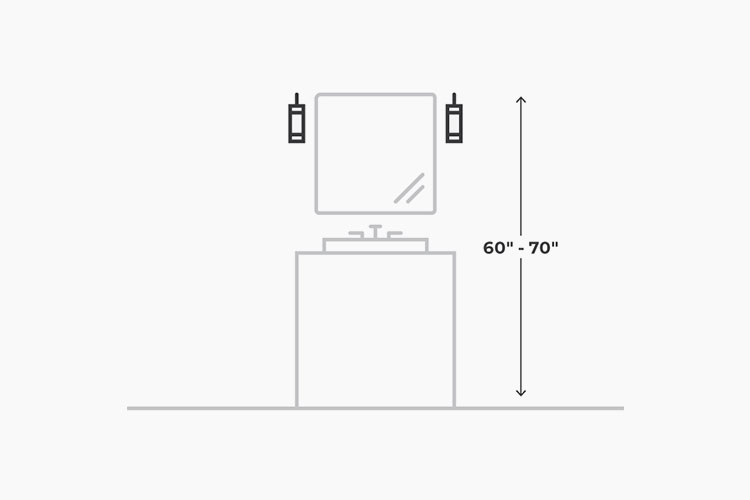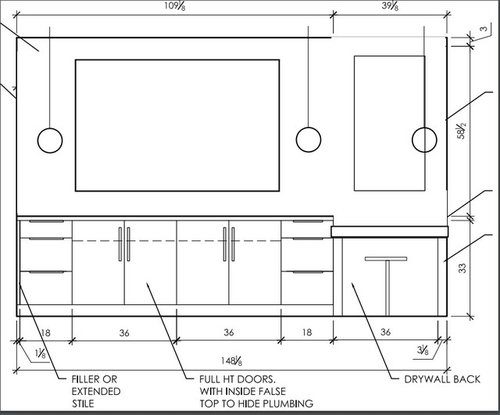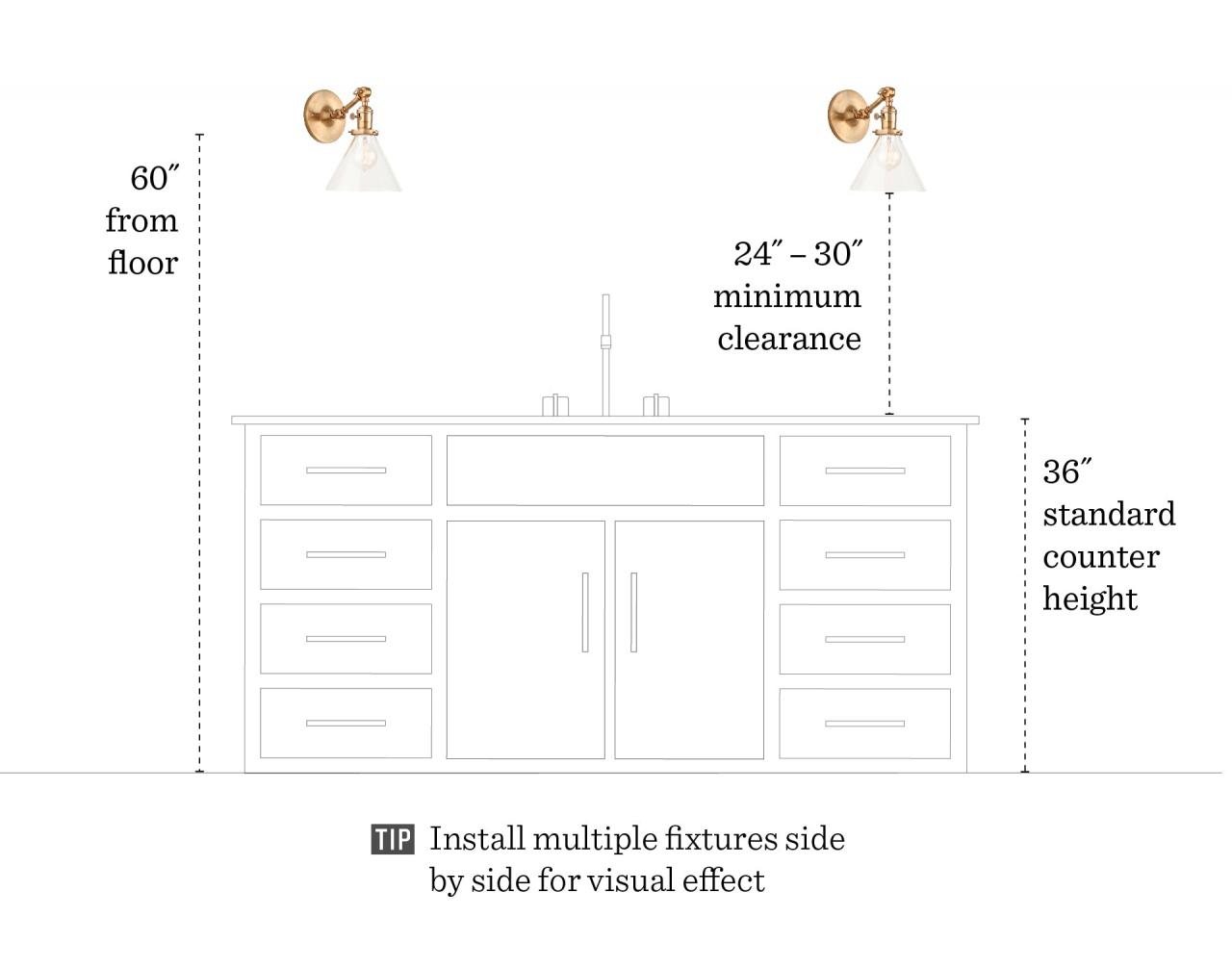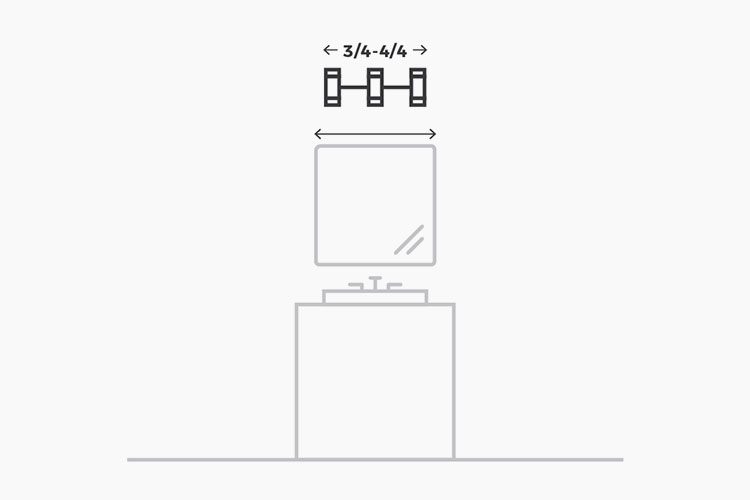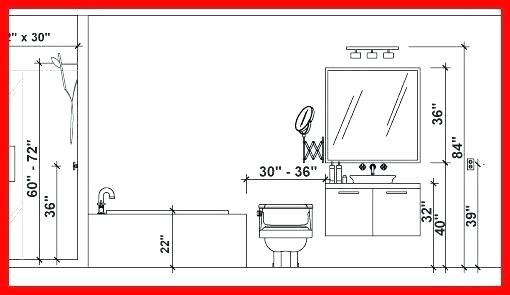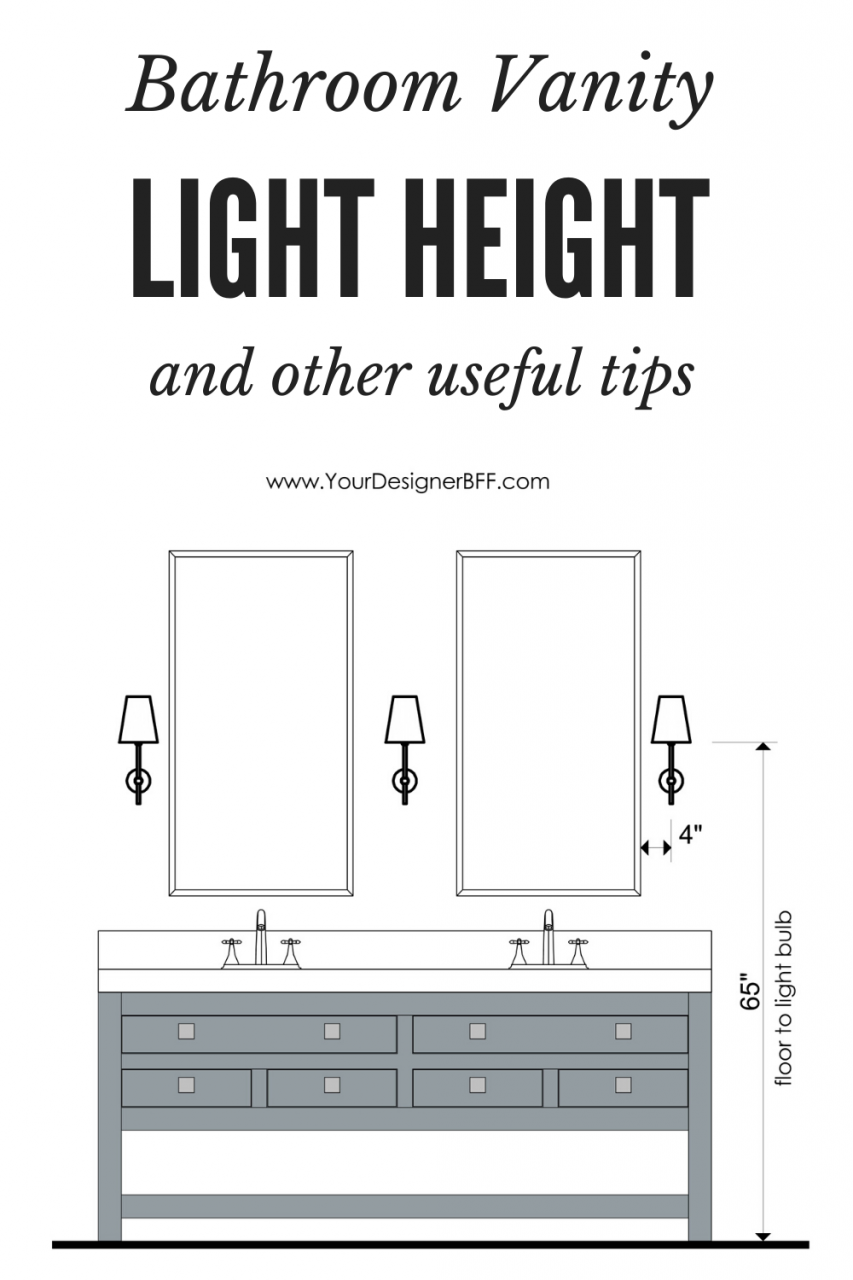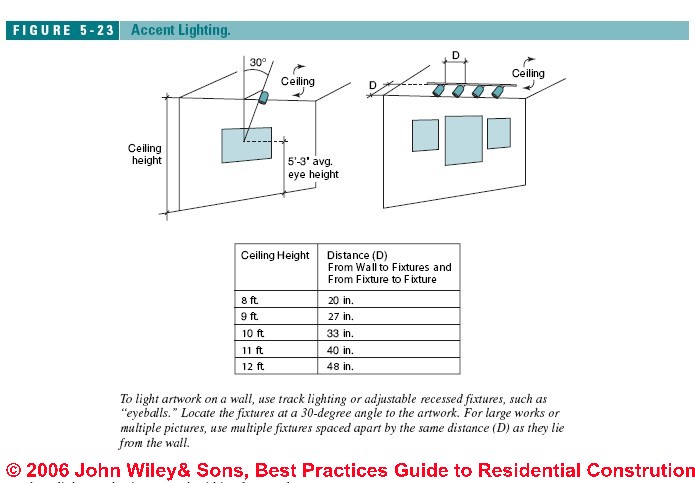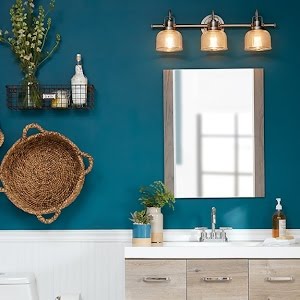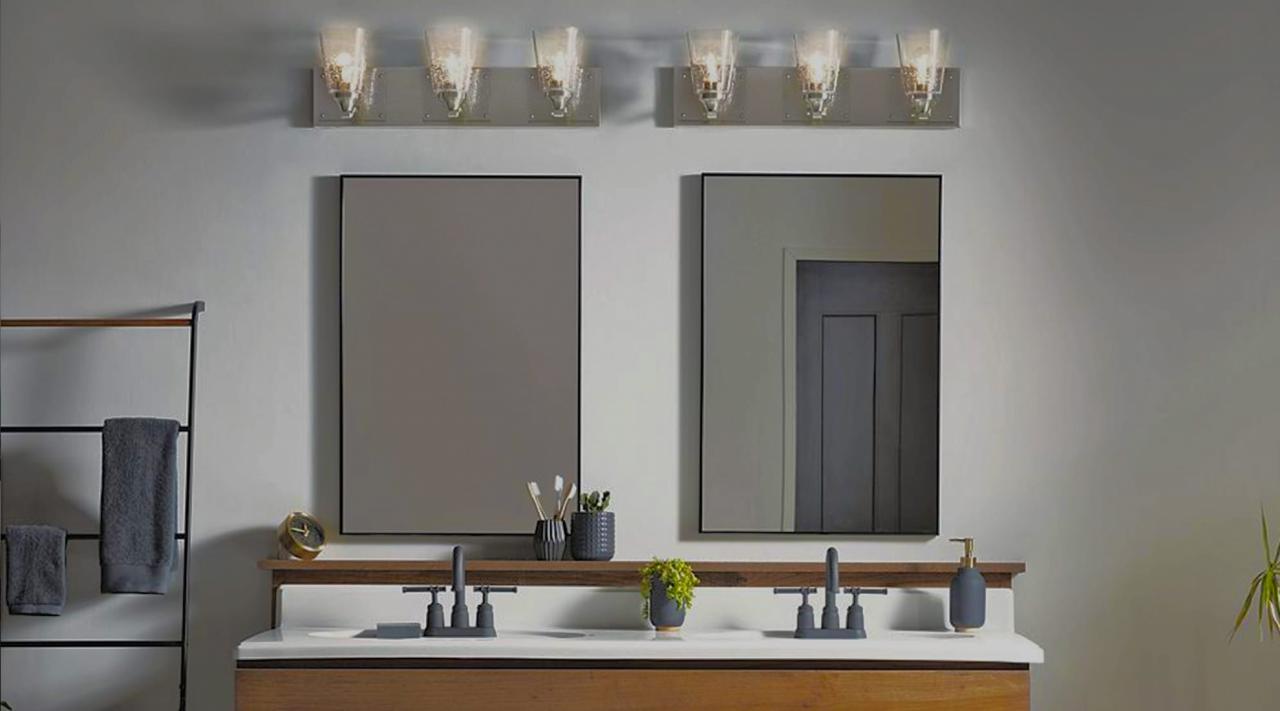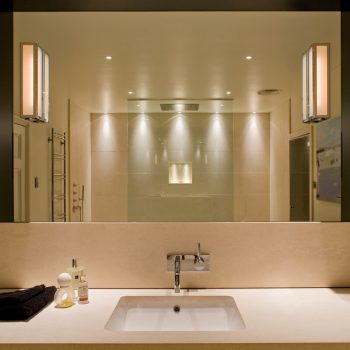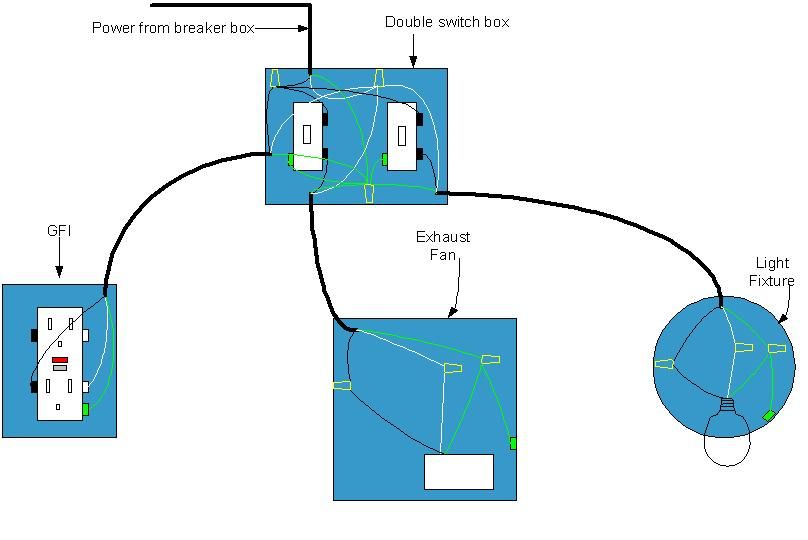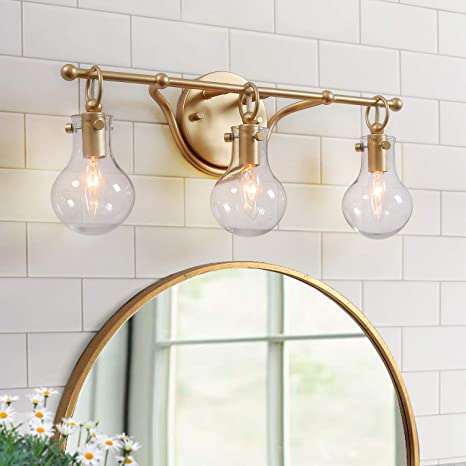The Importance of Proper Bathroom Light Fixture Height
Proper bathroom light fixture height is crucial for creating a functional and visually appealing space. The right placement of light fixtures can enhance the overall ambiance, functionality, and safety of your bathroom. Whether you’re getting ready in the morning or winding down in the evening, having adequate lighting at the correct height can make all the difference. Here’s why it’s essential to pay attention to the height of your bathroom light fixtures:
- Task Lighting: Properly placed light fixtures provide adequate task lighting for activities such as shaving, applying makeup, or grooming. Placing fixtures at the correct height ensures that you have enough light to see clearly without casting shadows on your face. This is especially important around the vanity area, where precise lighting is essential for grooming tasks.
- Ambiance: The height of your bathroom light fixtures also plays a crucial role in setting the ambiance of the space. Whether you prefer soft, diffused lighting for a relaxing bath or bright, focused light for getting ready in the morning, adjusting the height of your fixtures can help you achieve the desired atmosphere. By strategically placing fixtures at the right height, you can create a warm and inviting ambiance that enhances the overall comfort and enjoyment of your bathroom.
- Safety: Properly installed light fixtures contribute to the safety of your bathroom by reducing the risk of accidents and injuries. Well-lit spaces are easier to navigate, especially during nighttime visits or early mornings when visibility may be limited. By ensuring that your fixtures are installed at the correct height, you can minimize the risk of trips, slips, and falls in the bathroom.
- Aesthetic Appeal: In addition to functionality and safety, the height of your bathroom light fixtures can also impact the overall aesthetic appeal of the space. Thoughtfully placed fixtures can enhance the architectural features of the room, highlight decorative elements, and create visual interest. By paying attention to the height of your fixtures, you can achieve a balanced and harmonious look that complements your bathroom decor.
- Energy Efficiency: Properly positioned light fixtures can also contribute to energy efficiency by maximizing the effectiveness of your lighting. Placing fixtures at the correct height ensures that the light is directed where it’s needed most, reducing wasted energy and minimizing utility costs. By optimizing the height of your fixtures, you can create a well-lit and energy-efficient bathroom that benefits both your wallet and the environment.

Factors to Consider When Determining the Height of Bathroom Light Fixtures
Determining the height of bathroom light fixtures requires careful consideration of several factors to ensure optimal functionality, aesthetics, and safety. From the type of fixture to the layout of the space, various elements influence the ideal placement of light fixtures in the bathroom. By taking these factors into account, you can achieve a well-lit and visually appealing bathroom that meets your needs and preferences. Here are some key factors to consider when determining the height of bathroom light fixtures:
Ceiling Height: The height of your bathroom’s ceiling is one of the primary factors to consider when determining the placement of light fixtures. In bathrooms with standard ceiling heights, light fixtures are typically installed flush with the ceiling or slightly below to provide ample illumination without overwhelming the space. However, in bathrooms with high ceilings, you may have more flexibility to install fixtures at varying heights to create visual interest and enhance the overall ambiance.
Vanity Height: The height of the vanity or sink area also influences the placement of light fixtures above the mirror. Ideally, the bottom of the fixture should be positioned at eye level or slightly above to minimize shadows and provide even illumination for grooming tasks. However, this can vary depending on the height of the people using the bathroom, so it’s essential to consider the needs of all users when determining the fixture height.
Mirror Size and Placement: The size and placement of the bathroom mirror play a significant role in determining the height of light fixtures above the vanity. If you have a large mirror that extends from the countertop to the ceiling, you may opt for wall-mounted sconces or pendant lights installed at eye level on either side of the mirror. For smaller mirrors or mirrors with decorative frames, a single overhead fixture or a row of lights above the mirror may be more appropriate.
Task Lighting vs. Ambient Lighting: Consider the primary function of the light fixture when determining its height in the bathroom. Task lighting, such as vanity lights or sconces around the mirror, should be positioned to provide even, shadow-free illumination for grooming tasks. Ambient lighting, such as recessed ceiling lights or pendant lights, should be installed at a height that creates a comfortable and inviting atmosphere in the space.
Style and Design Preferences: Personal style and design preferences also play a role in determining the height of bathroom light fixtures. Whether you prefer modern, minimalist fixtures or vintage-inspired sconces, the height and placement of the fixtures should complement the overall aesthetic of the space. Consider the scale, proportion, and visual impact of the fixtures to other elements in the bathroom, such as cabinetry, hardware, and decor.
Building Codes and Regulations: Finally, be sure to consult local building codes and regulations when installing bathroom light fixtures to ensure compliance with safety standards. Building codes may specify minimum clearance heights for fixtures above wet areas, such as sinks, showers, and bathtubs, to prevent electrical hazards and ensure safe operation. Be sure to follow these guidelines to avoid potential safety issues and ensure the longevity of your lighting installation.
Standard Guidelines for Bathroom Light Fixture Height
When it comes to installing bathroom light fixtures, following standard guidelines can help ensure optimal functionality, aesthetics, and safety in the space. While there’s no one-size-fits-all approach to fixture height, certain guidelines can serve as a helpful starting point for achieving the desired lighting design. Whether you’re installing vanity lights, overhead fixtures, or wall sconces, understanding these standard guidelines can help you make informed decisions about the placement of light fixtures in your bathroom. Here are some standard guidelines for bathroom light fixture height:
Vanity Lights: When installing vanity lights above the mirror, the bottom of the fixture should typically be positioned at eye level or slightly above to provide even illumination for grooming tasks. Ideally, the center of the fixture should be mounted 75 to 80 inches above the finished floor. This ensures that the light is directed onto the face without casting shadows and provides optimal visibility for activities such as shaving, applying makeup, or styling hair.
Overhead Fixtures: For overhead fixtures, such as recessed ceiling lights or flush-mount fixtures, the standard guideline is to install them flush with the ceiling or slightly below. This ensures that the light is evenly distributed throughout the space and prevents glare or harsh shadows. In bathrooms with standard ceiling heights, overhead fixtures are typically mounted 7 to 8 feet above the finished floor.
Wall Sconces: When installing wall sconces around the vanity mirror, the standard guideline is to position them at eye level on either side of the mirror. This ensures that the light is directed onto the face from both sides, minimizing shadows and providing even illumination for grooming tasks. The center of the sconces should typically be mounted 65 to 70 inches above the finished floor.
Pendant Lights: For pendant lights installed above the vanity or bathtub, the standard guideline is to position them so that the bottom of the fixture is at least 12 to 18 inches above the tallest user’s head when standing. This ensures that there’s adequate clearance for the fixture and prevents it from obstructing views or causing discomfort. Pendant lights can be installed in a cluster or in a row, depending on the size and layout of the space.
Clearance Heights: When installing light fixtures above wet areas, such as sinks, showers, or bathtubs, it’s essential to consider clearance heights to prevent electrical hazards and ensure safe operation. Building codes may specify minimum clearance heights for fixtures above these areas, so be sure to consult local regulations and guidelines before installing light fixtures in these locations. In general, fixtures should be installed at least 8 feet above the water surface to ensure safety and compliance with building codes.
Personal Preferences and Needs: While these standard guidelines can serve as a helpful starting point for determining fixture height, it’s essential to consider your personal preferences and needs when installing bathroom light fixtures. Take into account factors such as the height of the people using the bathroom, the size and layout of the space, and the overall design aesthetic. By considering these factors alongside standard guidelines, you can achieve a lighting design that meets your functional needs, enhances the ambiance of the space, and reflects your style.
Adjusting Light Fixture Height for Different Areas of the Bathroom
In the bathroom, different areas may require varying heights for light fixtures to ensure optimal functionality, aesthetics, and safety. From the vanity area to the shower enclosure, each space has unique lighting needs that should be addressed with careful consideration of fixture height. By adjusting the height of light fixtures to suit the specific requirements of each area, you can create a well-lit and visually appealing bathroom that meets your needs and preferences. Here’s how to adjust light fixture height for different areas of the bathroom:
Vanity Area: The vanity area is one of the most critical areas of the bathroom to consider when adjusting light fixture height. For vanity lights installed above the mirror, the bottom of the fixture should typically be positioned at eye level or slightly above to provide even illumination for grooming tasks. Adjust the height of the fixtures as needed to ensure that the light is directed onto the face without casting shadows and provides optimal visibility for activities such as shaving, applying makeup, or styling hair.
Shower Enclosure: In the shower enclosure, it’s essential to consider both safety and functionality when adjusting light fixture height. For overhead fixtures, such as recessed ceiling lights or flush-mount fixtures, install them flush with the ceiling or slightly below to ensure even distribution of light throughout the space. Avoid installing fixtures too close to the water source to prevent electrical hazards and ensure compliance with safety standards. If using pendant lights or wall sconces in the shower area, ensure that they are rated for wet locations and installed at the appropriate height to provide adequate clearance and prevent water damage.
Bathtub Area: When adjusting light fixture height for the bathtub area, consider the placement of the fixtures in relation to the tub and surrounding space. Pendant lights installed above the bathtub should be positioned so that the bottom of the fixture is at least 12 to 18 inches above the tallest user’s head when standing. This ensures that there’s adequate clearance for the fixture and prevents it from obstructing views or causing discomfort during bathing. Wall sconces or recessed lights can also be installed around the perimeter of the bathtub to provide additional task or ambient lighting as needed.
Toilet Area: While the toilet area may not require as much lighting as other areas of the bathroom, it’s still essential to consider fixture height for optimal functionality and safety. Overhead fixtures installed above the toilet should be positioned flush with the ceiling or slightly below to provide even illumination without casting shadows or glare. Wall-mounted sconces or recessed lights can also be installed on either side of the toilet to provide additional task lighting or ambient illumination as needed.
General Ambient Lighting: In addition to task lighting for specific areas, it’s essential to consider the overall ambient lighting in the bathroom. Overhead fixtures, such as recessed ceiling lights or flush-mount fixtures, should be installed at a height that creates a comfortable and inviting atmosphere in the space. Adjust the height of these fixtures as needed to ensure even distribution of light and minimize glare or harsh shadows throughout the room.
Personal Preferences and Needs: Ultimately, the height of light fixtures in different areas of the bathroom should be adjusted according to your personal preferences and needs. Consider factors such as the height of the people using the bathroom, the size and layout of the space, and the overall design aesthetic when determining fixture height. By taking these factors into account, you can create a well-lit and visually appealing bathroom that meets your functional needs, enhances the ambiance of the space, and reflects your personal style.
Tips for Installing and Adjusting Bathroom Light Fixtures to Achieve Optimal Height
Installing and adjusting bathroom light fixtures to achieve optimal height requires careful planning and attention to detail. From selecting the right fixtures to positioning them correctly, there are several tips and techniques to ensure that your lighting design meets your functional needs, enhances the ambiance of the space, and complies with safety standards. Whether you’re renovating an existing bathroom or designing a new one, these tips can help you achieve the perfect lighting setup for your space. Here are some tips for installing and adjusting bathroom light fixtures to achieve optimal height:
Choose the Right Fixtures: Before installing light fixtures in your bathroom, carefully consider the type, style, and size of fixtures that best suit your needs and preferences. Whether you prefer wall-mounted sconces, overhead pendants, or recessed ceiling lights, choose fixtures that complement the overall design aesthetic of the space and provide the desired level of illumination. Consider factors such as the size and layout of the room, the height of the ceiling, and the placement of other elements, such as mirrors, sinks, and bathtubs, when selecting fixtures for your bathroom.
Measure Carefully: When determining the height of light fixtures in the bathroom, it’s essential to measure carefully to ensure that they are positioned correctly. Use a tape measure to determine the distance between the floor and the ceiling, as well as the height of any vanities, sinks, or mirrors in the space. Take into account the height of the people using the bathroom and adjust the fixture height accordingly to ensure optimal visibility and functionality.
Follow Standard Guidelines: Refer to standard guidelines for bathroom light fixture height to ensure that your installation meets safety standards and best practices. For vanity lights installed above the mirror, the bottom of the fixture should typically be positioned at eye level or slightly above to provide even illumination for grooming tasks. Overhead fixtures, such as recessed ceiling lights or flush-mount fixtures, should be installed flush with the ceiling or slightly below to ensure even distribution of light throughout the space. Follow these standard guidelines when installing and adjusting light fixtures in your bathroom to achieve optimal results.
Consider Task Lighting Needs: Consider the specific task lighting needs of each area of the bathroom when determining fixture height. For example, vanity lights installed above the mirror should be positioned to provide even illumination for grooming tasks such as shaving, applying makeup, or styling hair. Adjust the height of the fixtures as needed to ensure that the light is directed onto the face without casting shadows or causing glare. Similarly, overhead fixtures installed above the shower or bathtub should be positioned to provide adequate illumination for bathing and showering activities.
Experiment with Placement: Don’t be afraid to experiment with the placement of light fixtures to achieve the desired lighting effect in your bathroom. Try positioning fixtures at different heights and angles to see how they impact the overall ambiance and functionality of the space. Pay attention to factors such as shadowing, glare, and evenness of illumination, and make adjustments as needed to achieve optimal results. By experimenting with placement, you can find the perfect balance of functionality and aesthetics for your bathroom lighting design.
Consult a Professional: If you’re unsure about the best way to install or adjust bathroom light fixtures, consider consulting a professional lighting designer or electrician for expert advice and assistance. A professional can help you assess your lighting needs, select appropriate fixtures, and ensure that they are installed safely and correctly. Whether you’re tackling a DIY project or working with a contractor, consulting a professional can help ensure that your bathroom lighting design meets your needs and exceeds your expectations.
The How To Lighting Guide – Lightology
bathroom vanity light height vanity light height typical bathroom
Bathroom Vanity Light Height Bathroom lighting design, Home
Guide to Bathroom Lighting Locations, Levels, Types
Vanity Light Height
Vanity Light Height The Home Depot – YouTube
Bathroom Vanity Lighting Buyeru0027s Guide Lumens
Related Posts:
- Bathroom Lighting Regulations Zone
- Can Bathroom Lights And Receptacles Be On The Same Circuit
- Modern Bathroom Lighting Vanity
- Bathroom Lighting Brands
- 5 Foot Bathroom Light Fixture
- Bathroom Lighting How To
- Nickel Bathroom Light Fixtures
- Bathroom Light With Convenience Outlet
- Small Bathroom Lighting Layout
- Bathroom Lighting Circuit
